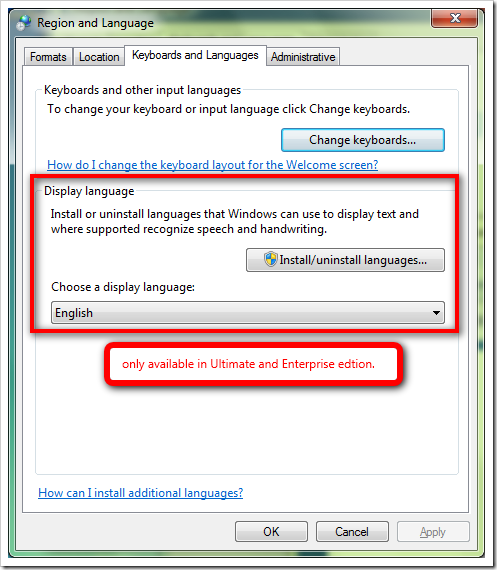Unveiling Linguistic Diversity: A Comprehensive Guide to Changing the Default Language in Windows 7

In today’s interconnected world, the ability to customize your computing environment to suit your preferred language is essential. Windows 7, a widely used operating system, provides users with the flexibility to change the default language, allowing them to navigate their computing experience in their native language or a language of their choice. Whether you’re a multilingual user seeking to switch between languages effortlessly or an international user looking to localize your system, changing the default language in Windows 7 offers a means of enhancing accessibility and improving user experience. In this comprehensive guide, we will delve deep into the intricacies of changing the default language in Windows 7, providing step-by-step instructions, advanced techniques, and practical insights to help you unveil linguistic diversity and tailor your computing environment to your linguistic preferences.
Understanding Default Language in Windows 7:
Before delving into the process of changing the default language, let’s first grasp the concept and significance of the default language setting in Windows 7:
- Definition: The default language in Windows 7 refers to the language in which the operating system’s user interface elements, such as menus, dialog boxes, and system messages, are displayed.
- Accessibility and Usability: Changing the default language allows users to interact with their Windows 7 system in their preferred language, enhancing accessibility and usability.
- Localization and Internationalization: Windows 7 supports multiple languages and locales, enabling users worldwide to customize their computing experience and localize their systems to suit their linguistic preferences.
Accessing Language Settings in Windows 7:
Now, let’s explore how to access and navigate language settings in Windows 7:
- Accessing Control Panel:
- Click on the Start button in the taskbar and select “Control Panel” from the menu.
- Navigating Language Settings:
- In Control Panel, locate and click on the “Clock, Language, and Region” option.
- Next, click on “Change display language” under the “Region and Language” category.
Changing the Default Language:
Now that we’ve accessed language settings, let’s explore how to change the default language in Windows 7:
- Selecting New Language:
- In the “Region and Language” window, navigate to the “Keyboards and Languages” tab.
- Click on the “Install/uninstall languages…” button to access language options.
- Choosing Language Pack:
- Select the desired language from the list of available language packs.
- Click on “OK” to confirm your selection and initiate the language installation process.
- Applying Language Changes:
- Once the language pack installation is complete, return to the “Region and Language” window.
- Select the newly installed language from the drop-down menu in the “Choose a display language” section.
- Click on “Apply” to apply the language changes to your Windows 7 system.
Advanced Features and Tips:
To further enhance your experience with changing the default language in Windows 7, consider the following advanced features and tips:
- Language Pack Availability:
- Note that language packs may not be available for all languages or editions of Windows 7. Check the availability of language packs for your specific edition of Windows 7 before proceeding.
- Regional Settings:
- In addition to changing the default display language, users can customize regional settings such as date, time, and number formats to match their preferred language and locale.
- Additional Language Features:
- Some language packs may include additional language features, such as handwriting recognition or speech recognition, to enhance the user experience in specific languages.
- Multiple User Accounts:
- Changes to the default language apply to the entire system and affect all user accounts. Users with multiple accounts on the same system may need to adjust language settings individually for each account.
Conclusion:
Changing the default language in Windows 7 provides users with the flexibility to customize their computing environment to suit their linguistic preferences and enhance accessibility. By following the comprehensive guide outlined above, users can effectively navigate language settings, select their preferred language, and localize their Windows 7 system with ease. Whether you’re a multilingual user seeking to switch between languages effortlessly or an international user looking to localize your system, mastering the art of changing the default language empowers you to tailor your computing experience to your linguistic preferences and unlock new possibilities for communication and interaction. So embrace linguistic diversity, explore the richness of language options in Windows 7, and unveil a world of accessibility and usability tailored to your needs.




